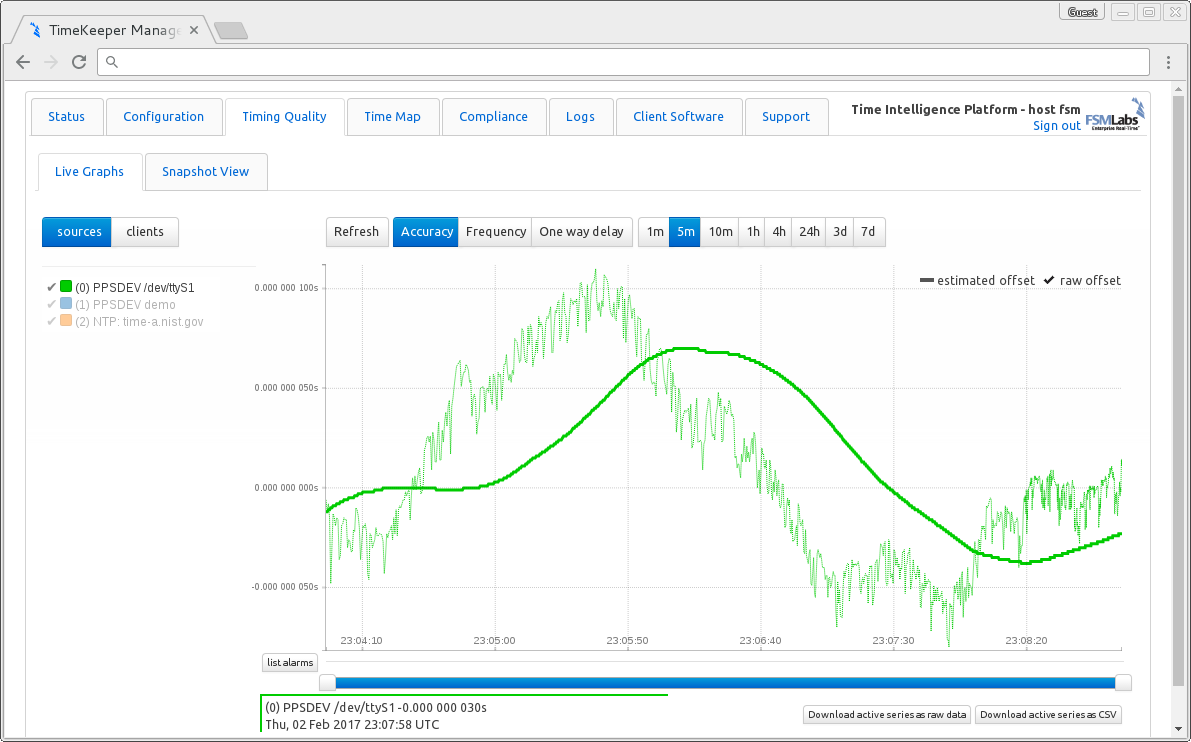Compliance introduction
Using TimeKeeper, you can quickly verify that your time is in compliance, your timing sources match your intended configuration, and any issues or problems are immediately brought to your attention.
Tools like the timing map quickly let you confirm that clients across your network are receiving time like you intend them to:

Timekeeper of course visualizes your timing sources so you can confirm they’re within the expected range. Here we’re looking at short term GPS accuracy in the +-50ns range:

TimeKeeper Compliance builds on these core capabilities to provide a centralized reporting tool to track all of your grandmasters, boundary clocks, clients, and other nodes across the enterprise, all from one place.
TimeKeeper Compliance - easy alerting, centralized management
Out of the box, TimeKeeper’s easily configured to satisfy common regulatory and compliance requests, such as:
- Report when accuracy requirements are exceeded (and recovered)
- Map the timing network to provide documentation of the timing network
- Log timing accuracy over time, for all sources
- Collect data about clients and peers, roll it all up into a central view
These are common requirements and likely sound familiar. TimeKeeper’s built to do this data collection out of the box. TimeKeeper Compliance extends these capabilities to provide simple reports on all of this data, so that you can have daily/weekly/monthly/yearly rollup reports of this information, broken down by host, network, and so on.
Open formats
TimeKeeper maintains all data in clear text formats for easy analysis and management. This includes logging parameters of each configured timing source, client timing quality information, network map data, and so on.
This means the datafiles used in the accuracy plot above is in clear text for archival, or integration with other tools you may need to use. Details on the log formats are in the “File formats” section.
Next we’ll look at these tools in Compliance in more detail.